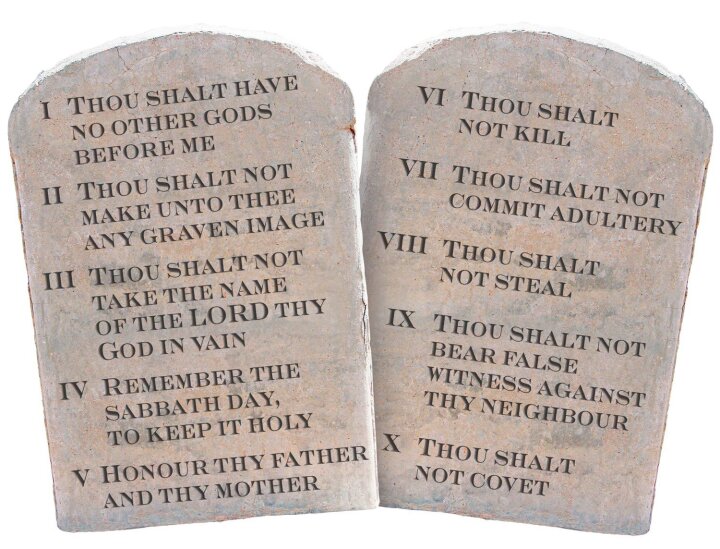@
GodSpeed63 Thank you for responding. However,
THOSE ARE NOT THE TEN COMMANDMENTS. The Ten Commandments story is the easiest story in the Bible to understand because it is linear. If you are willing you can easily resolve this issue for yourself in less than two hours.
Get a pen and some sheets of blank paper. Your reading assignment is Exodus chapter 19 through Exodus chapter 34. Exodus chapter 19 simply sets the stage for what follows so don't omit it.
As you read, summarize the verses in your own words, picking out the key ideas.
You will see that the commandments in Exodus chapter 20 that you cited are not called the Ten Commandments, were not written on stone tablets, and included more than ten commandments.
As you continue to read and note, you will see that the commandments keep rolling non-stop for several chapters.
In Exodus 24:4 Moses became a scribe and wrote everything down, made an altar, and did the burnt offering thing with hints of black magic. He then gets his buddies and they have a picnic with God.
In Exodus 25-30 Moses gets all kinds of instructions on how to be a fashion decorator and artist and pharmacist.
In Exodus 31:18 Moses gets the two stone tablets.
In Exodus 32 God and Moses hear the people exercising freedom of religion and get pissed. God wants to go on a killing spree but Moses tells him to chill and he'll do it. Moses lugs the stone tablets down the mountain, flies into a rage, smashes the tablets, and has his thugs kill about three thousand men. He lets his brother, Aron, who was behind it, off the hook without even saying an angry word to him.
In Exodus 34 God and Moses kiss and make up and, in Exodus 34:1, God tells Moses to chip out some stone tablets and lug them up the mountain for a do-over. Of course it's done in secret.
Exodus 34:10 explains the basis for the biblical miracles. That's why there are no such miracles today.
Exodus 34:11-26 contain the real Ten Commandments that were written on the stone tablets. Pay attention to Exodus 34:27-28 (NCB) = "27 The Lord said to Moses, “Write down these words, for in accordance with them I have established a covenant with you and with Israel.”
28 Moses remained with the Lord for forty days and forty nights without eating bread or drinking water. And he wrote the words of the covenant, the Ten Commandments, on the tablets."
It is essential to know what the real Ten Commandments are (Exodus 34:11-26) because all of the stories in the Old and New Testaments illustrate one or more of the Ten Commandments in action. Some stories show the benefits of obeying them while others show the consequences for disobeying them. Once you understand that, you can read any story and quickly identify the applicable Ten Commandment. Try it. Consequently, the stories themselves don't have to make logical sense (most don't) because that is not their real purpose. Their purpose is to get the listener, or reader, to think about the relevant commandment and the point it is making.
If you are willing to do that exercise you will see what a wonderful job the story tellers and writers did in basing complex stories on a few simple ideas.









